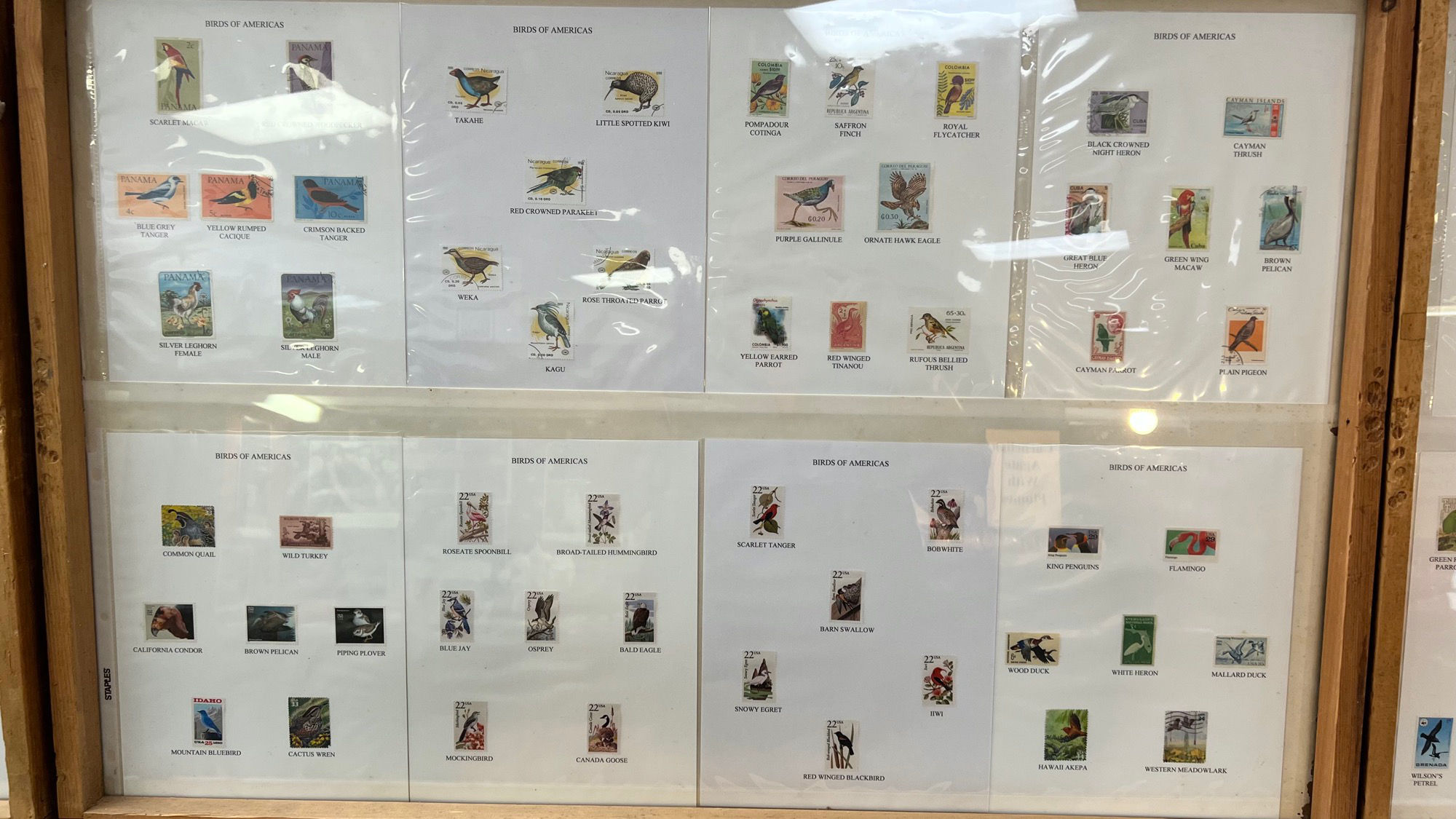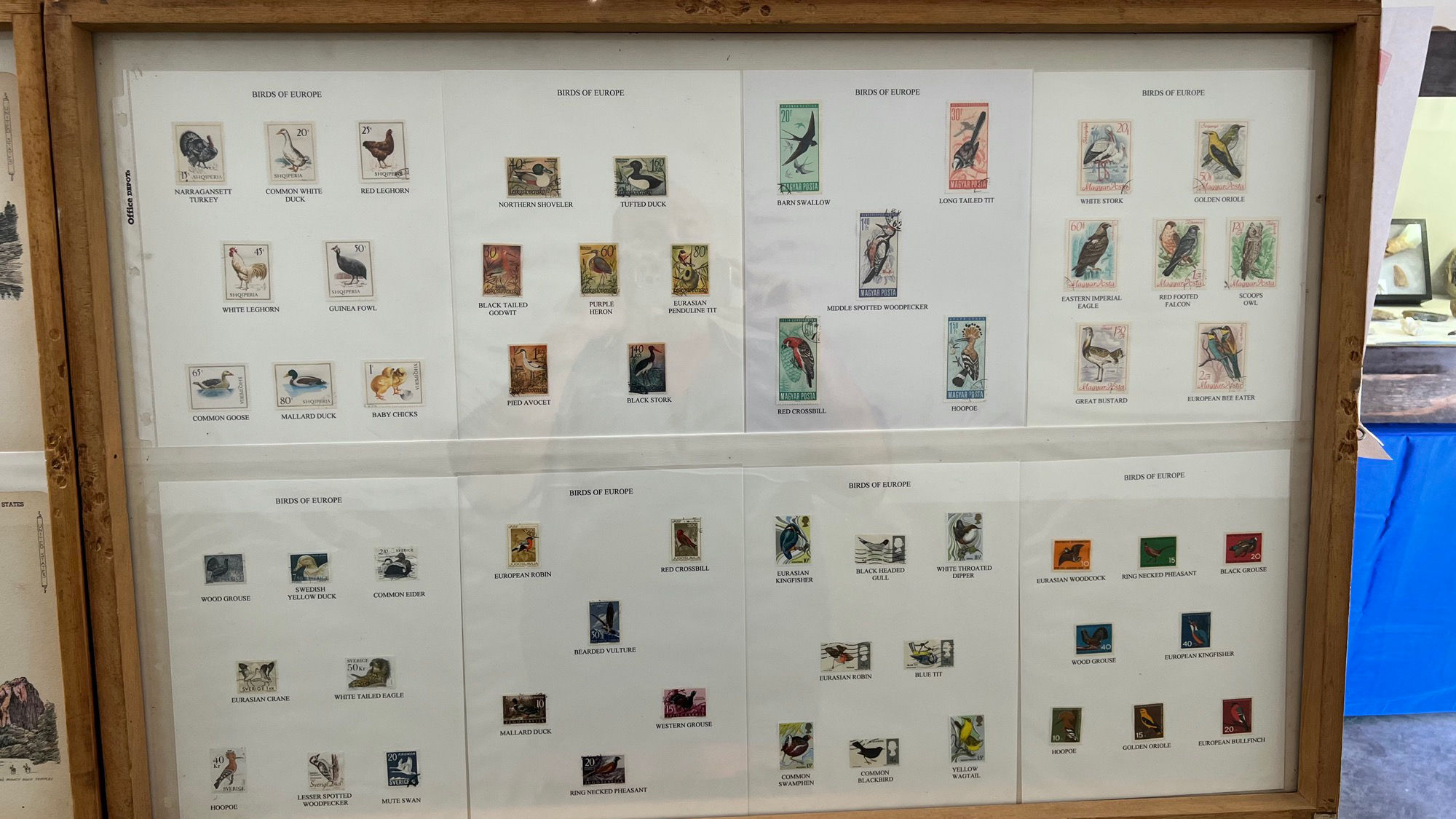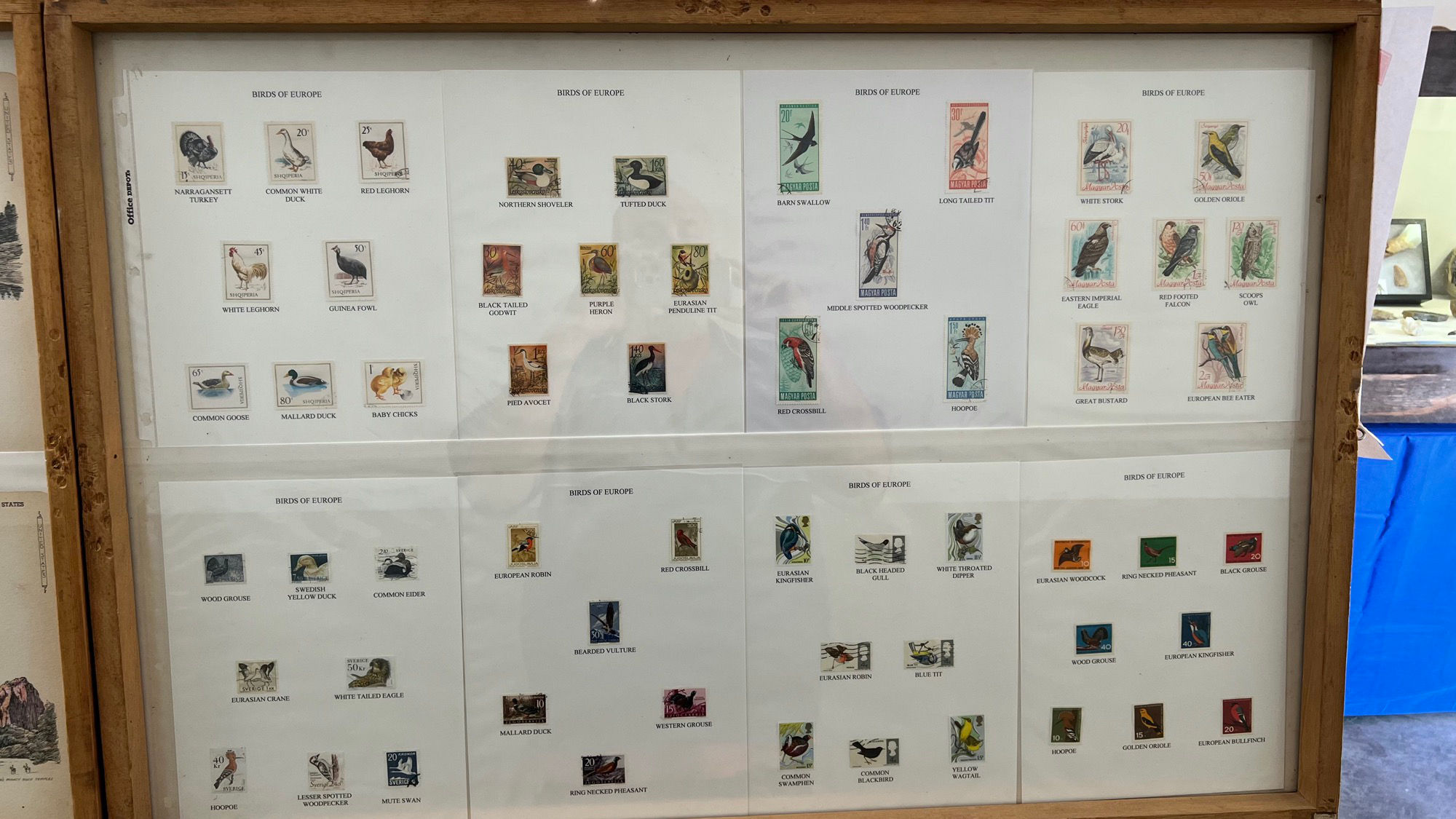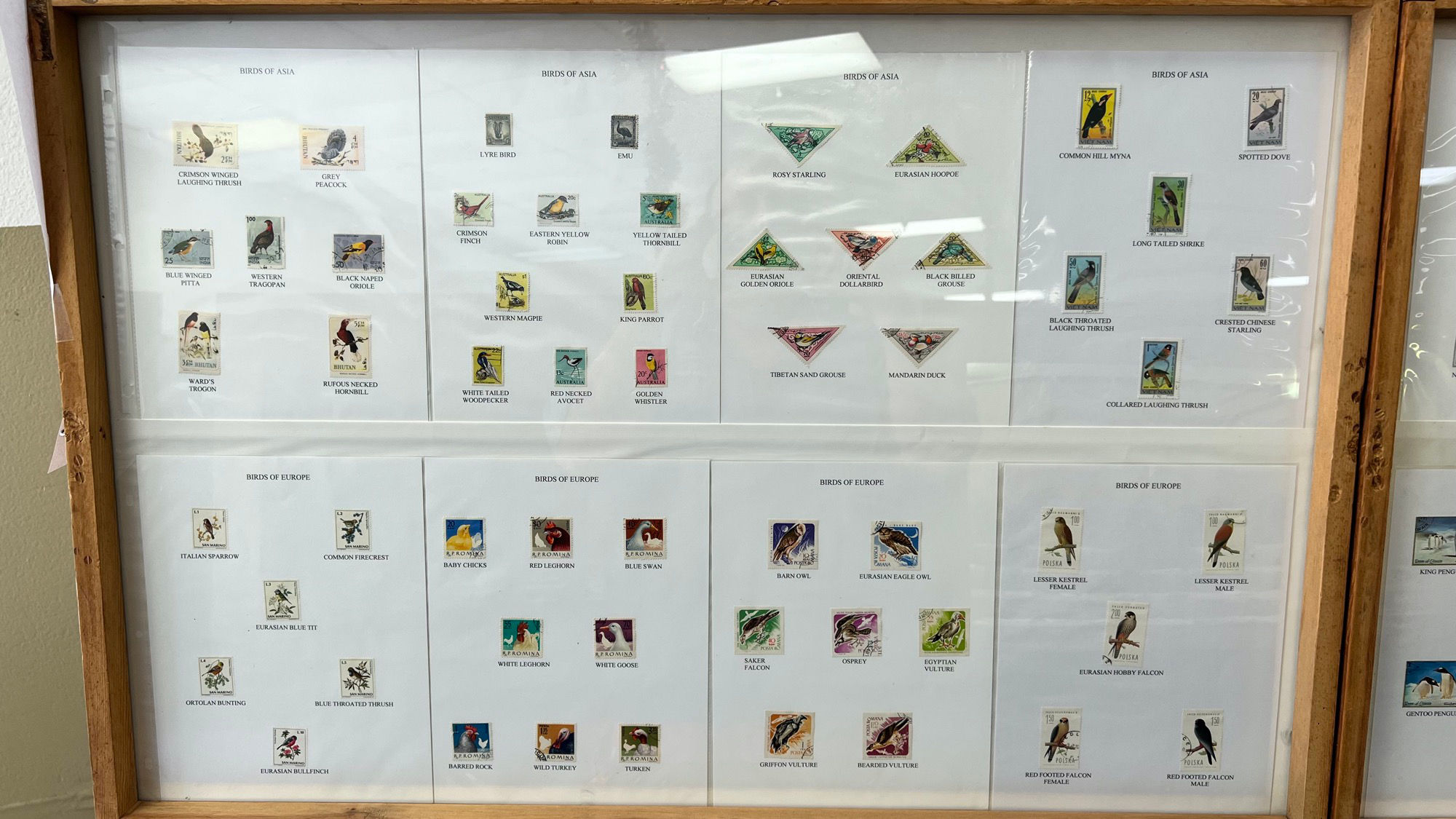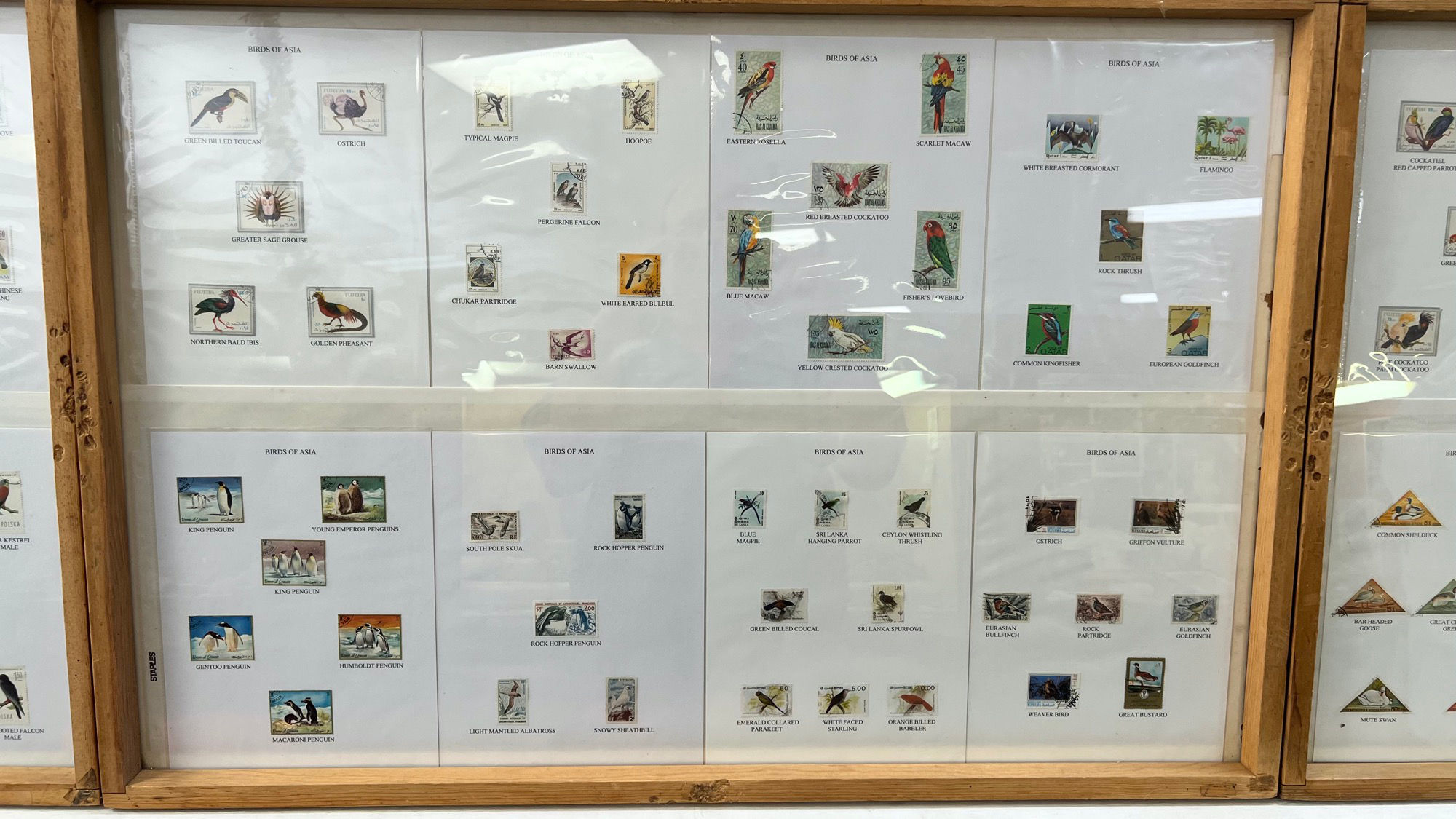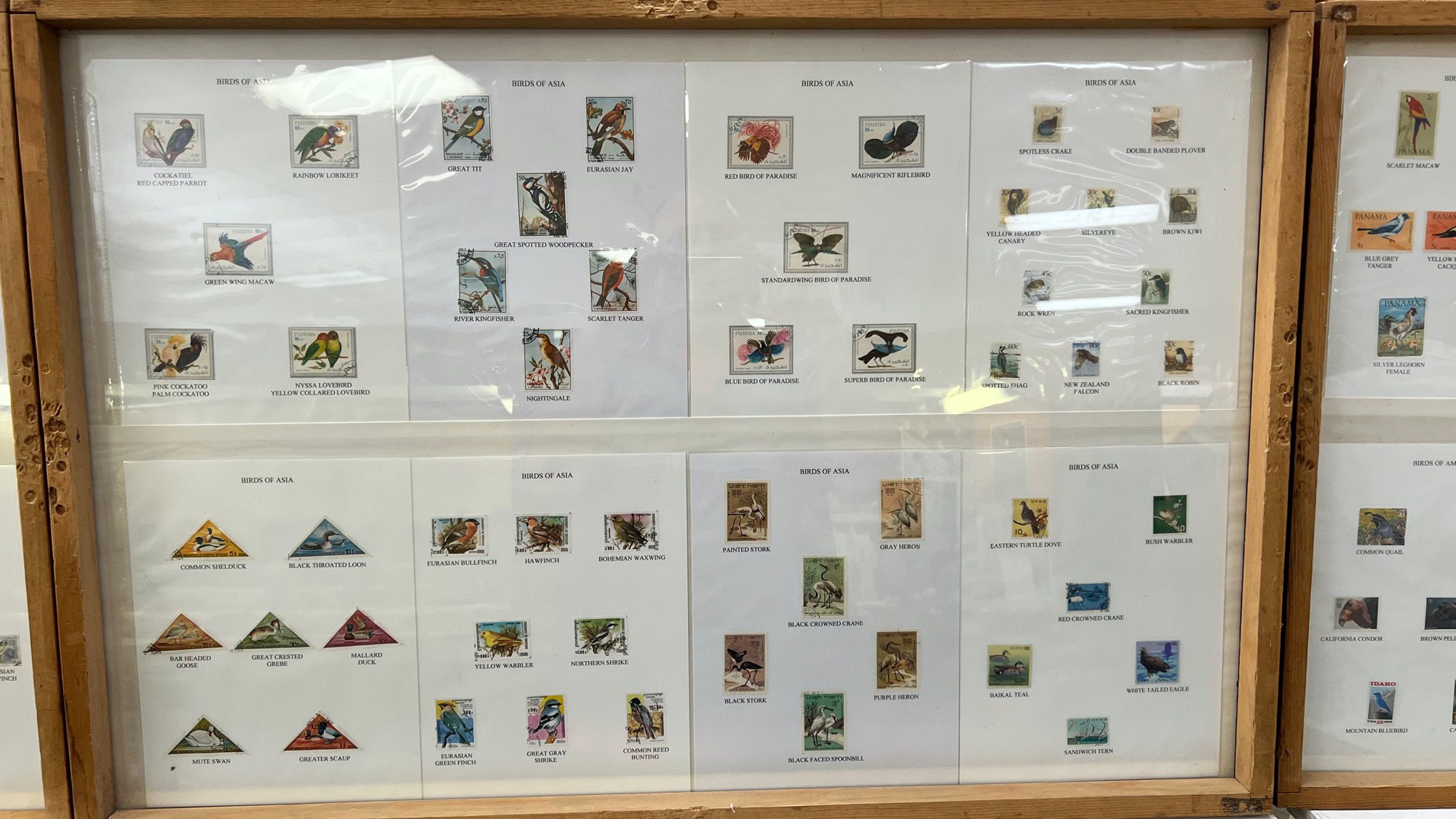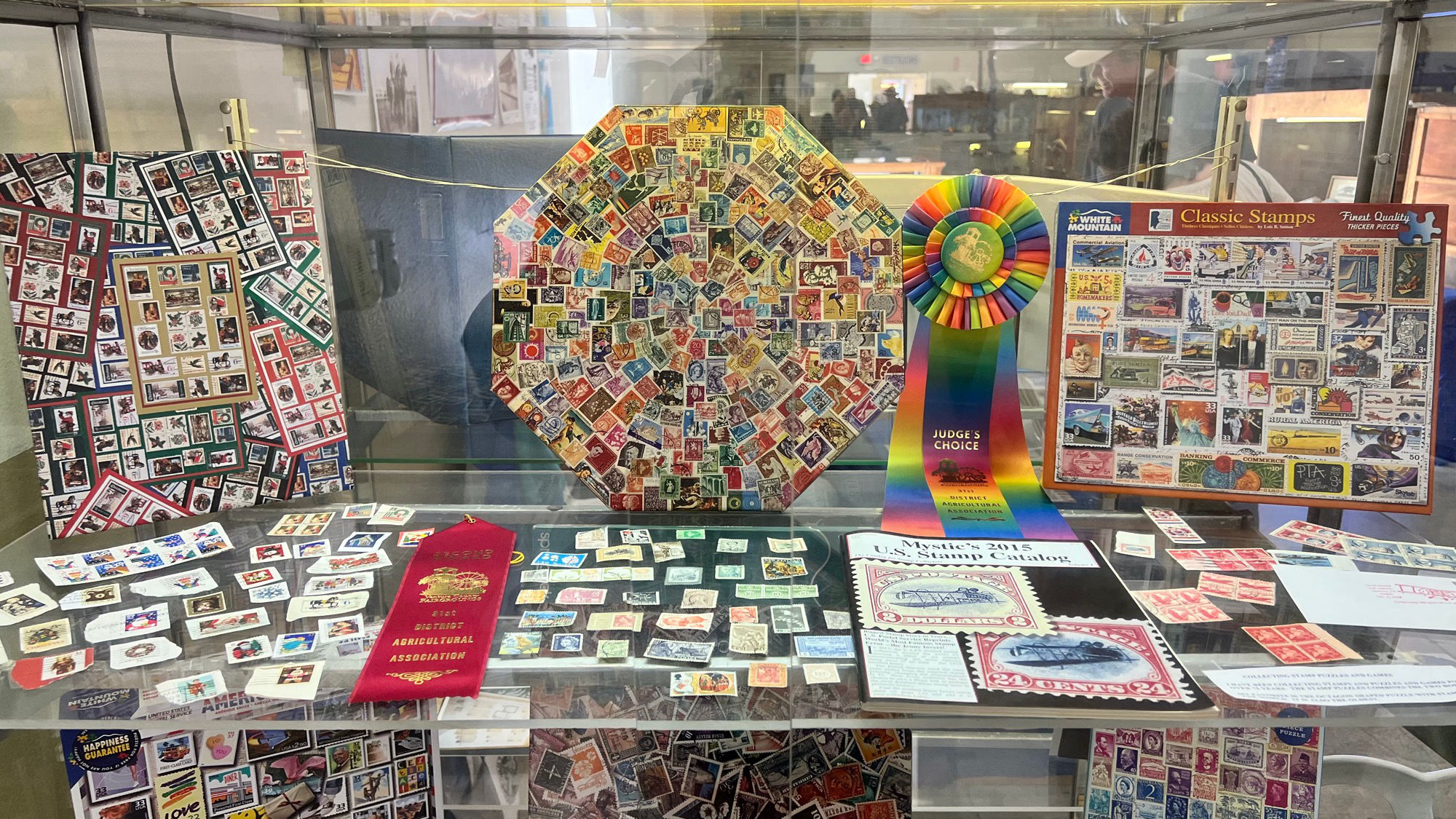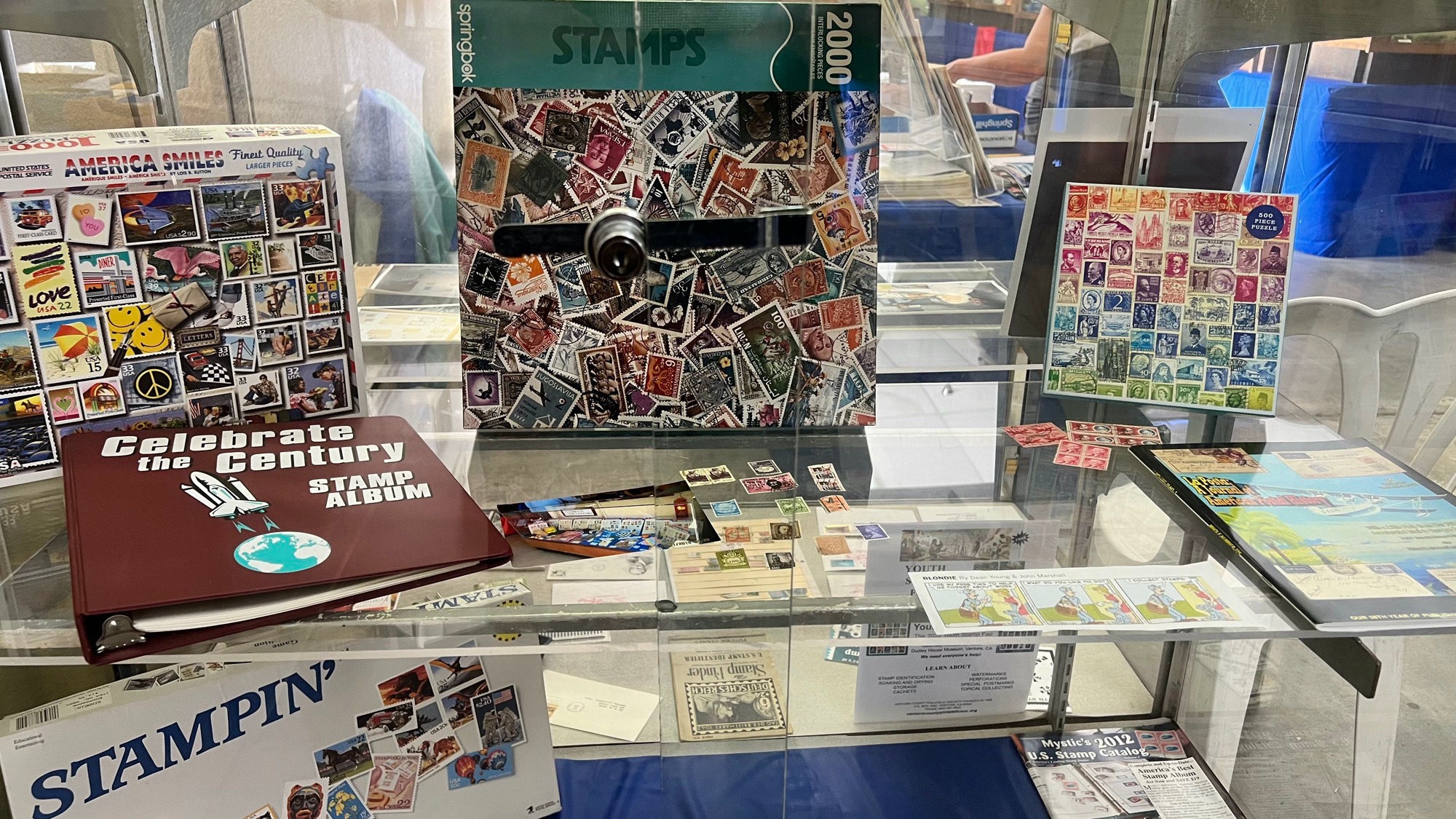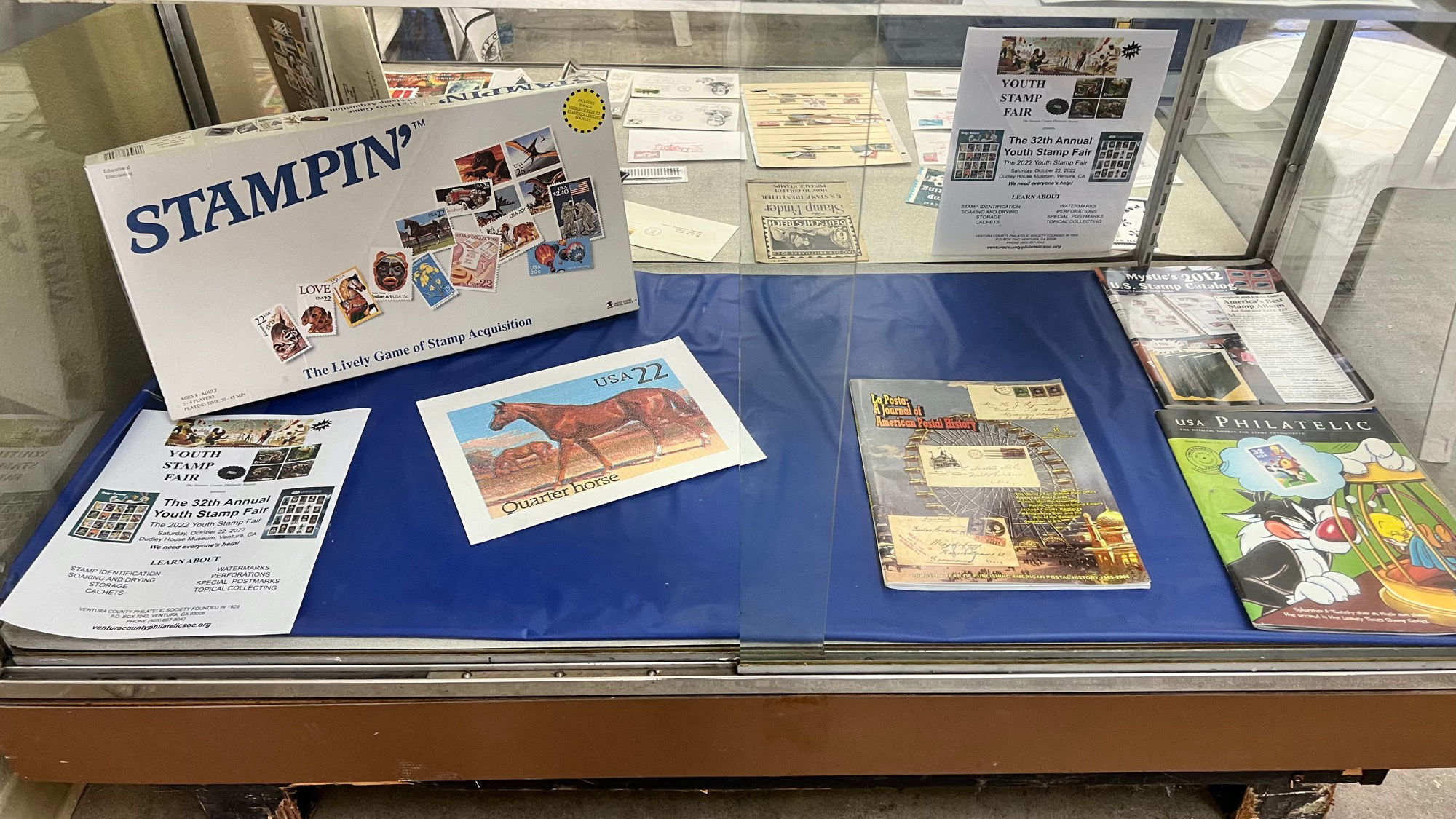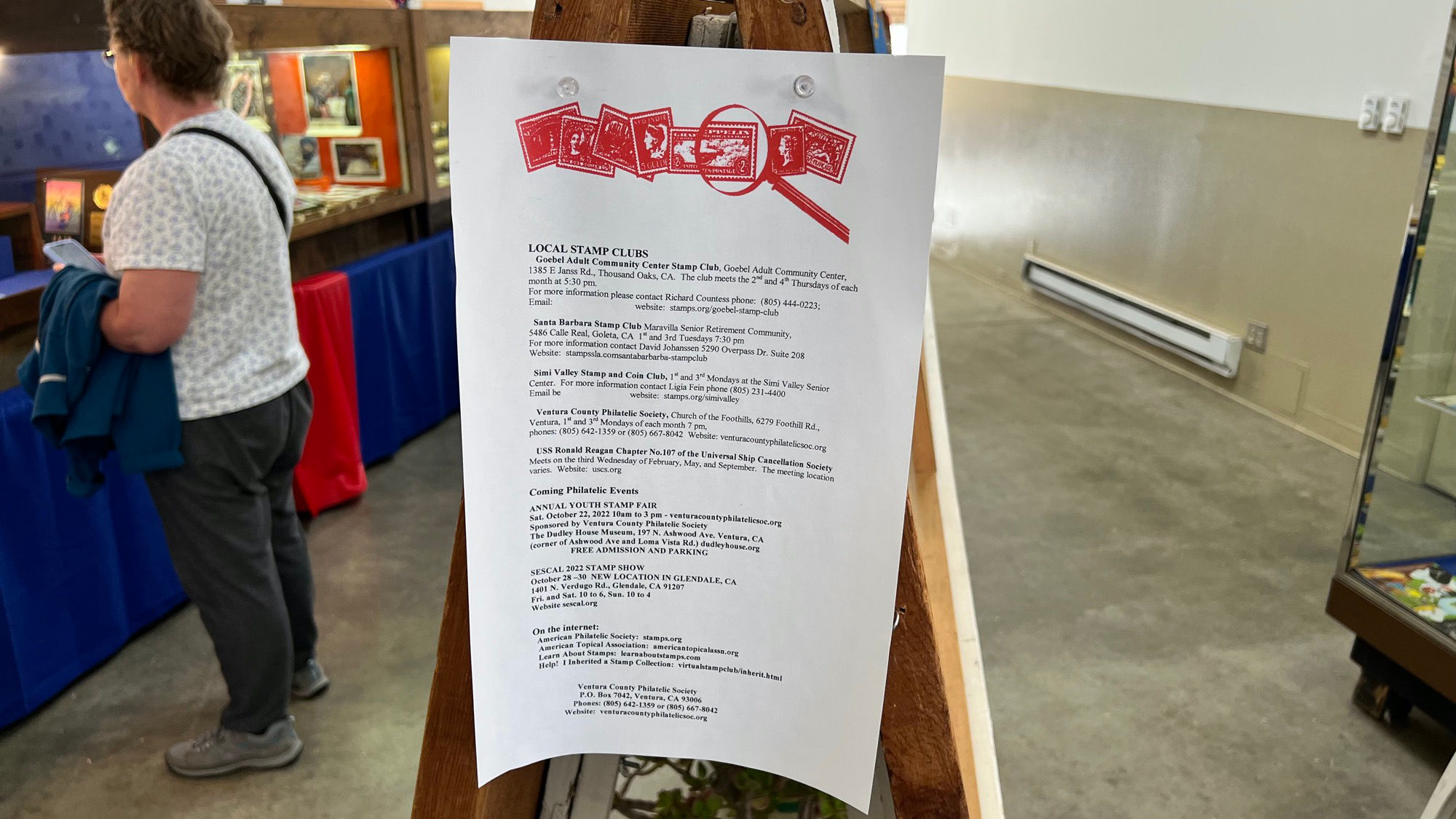
- Goebel Adult Community Center Stamp Club
Goebel Adult Community Center, 1385 E Janss Rd., Thousand Oaks, CA.
The club meets the 2nd and 4th Thursdays of each month at 5:30 pm.
Richard Countess phone: (805) 444-0223; - Santa Barbara Stamp Club
Maravilla Senior Retirement Community, 5486 Calle Real, Goleta, CA 1st and 3rd Tuesdays 7:30 pm.
For more information contact David Johanssen 5290 Overpass Dr. Suite 208 - Simi Valley Stamp and Coin Club
1st and 3rd Mondays at the Simi Valley Senior Center
Ligia Fein phone (805) 231-4400
Website: stamps.org/Simi-Valley - Ventura County Philatelic Society
Church of the Foothills, 6279 Foothill Rd., Ventura
1st and 3rd Mondays of each month 7:00 pm.
Phones: (805) 642-1359 or (805) 667-8042
Website: venturacountyphilatelicsoc.org - USS Ronald Reagan Chapter No. 107 of the Universal Ship Cancellation Society
Meets on the third Wednesday of February, May, and September. The meeting location varies.
Website: uscs.org
On the internet:
- American Philatelic Society: stamps.org
- American Topical Association: americantopical.org
- Virtual Stamp Club: virtualstampclub.com
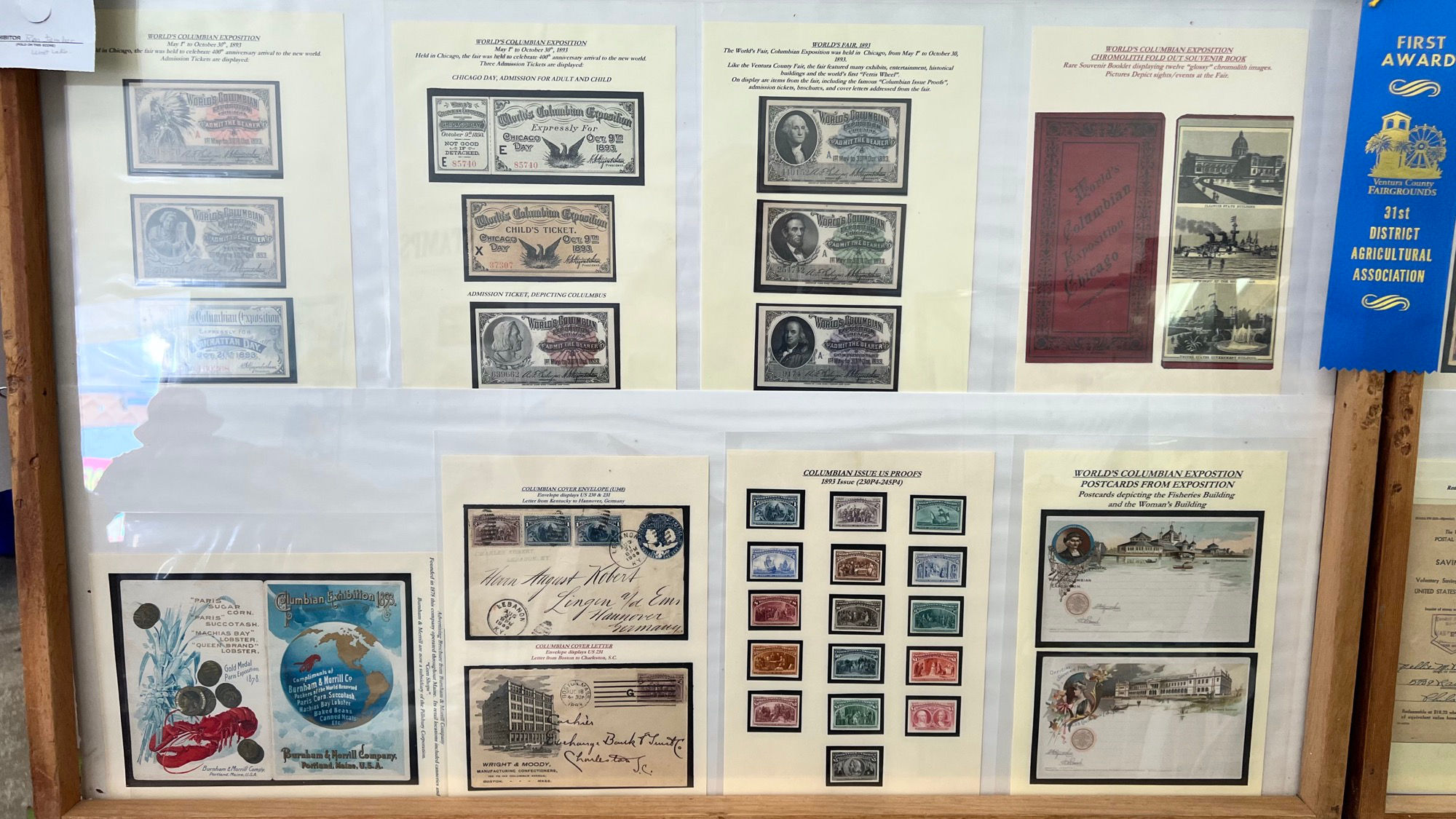
The World's Fair, Columbian Exposition was held in Chicago, for m May 1st to October 30, 1893. Like the Ventura County Fair, the fair featured many exhibits, entertainment, historical buildings, and the world's first "Ferris Wheel".
On display are items from the fair, including the famous "Columbian Issue Proofs", admission tickets, brochures, and cover letters addressed from the fair.
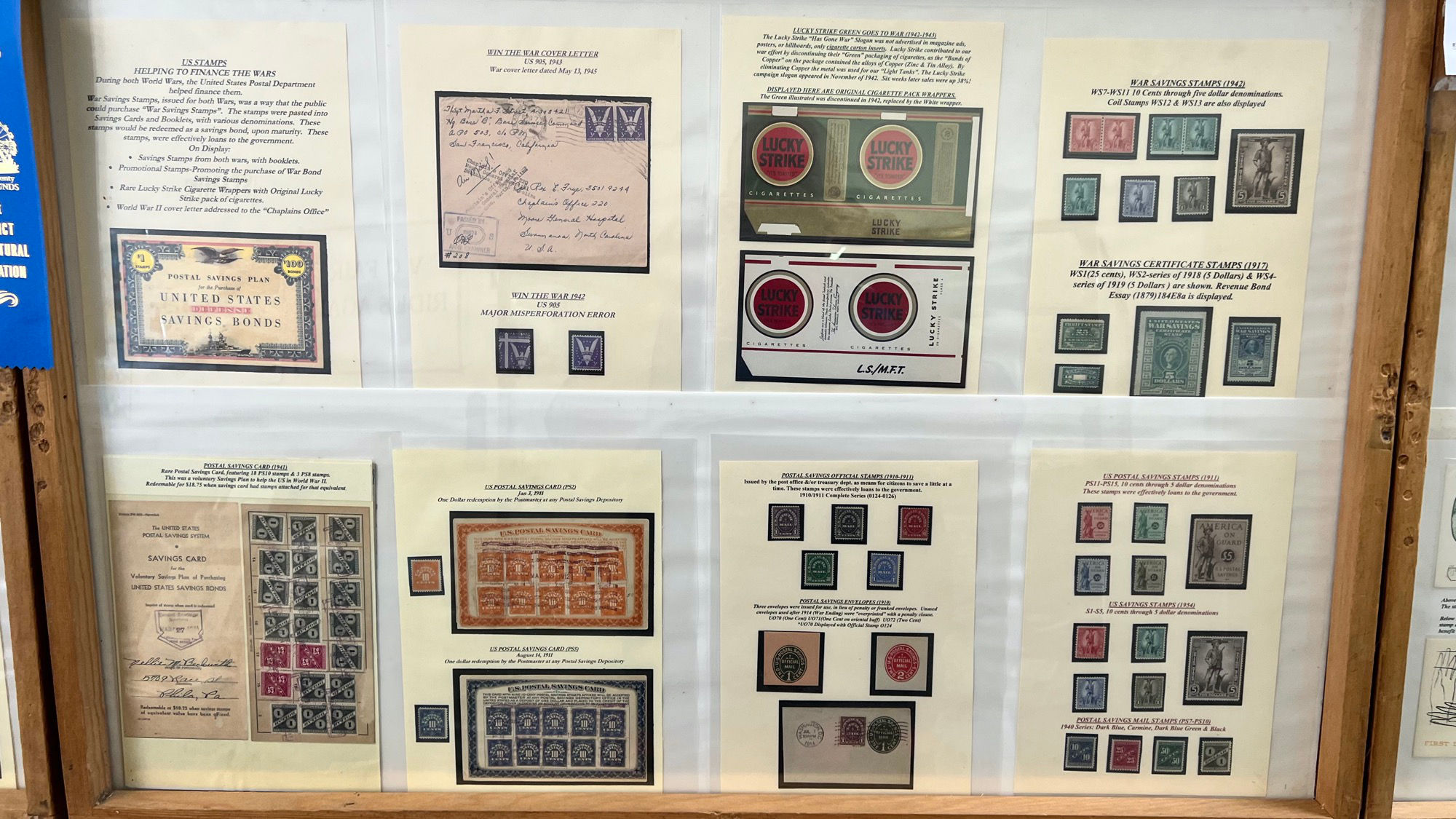
During both World Wars, the United States Postal Department helped finance them. War Savings Stamps, issued for both Wars, was a way that the public could purchase "War Savings Stamps". The stamps were pasted into Savings Cards and Booklets, with various denominations. These stamps would be redeemed as a savings bond, upon maturity. These stamps, were effectively loans to the government.
On Display:
- Savings Stamps from both wars, with booklets.
- Promotional Stamps - Promoting the purchase of War Bond Savings Stamps
- Rare Lucky Strike Cigarette Wrappers with Original Lucky Strike pack of cigarettes.
- World War II cover letter addressed to the "Chaplains Office"
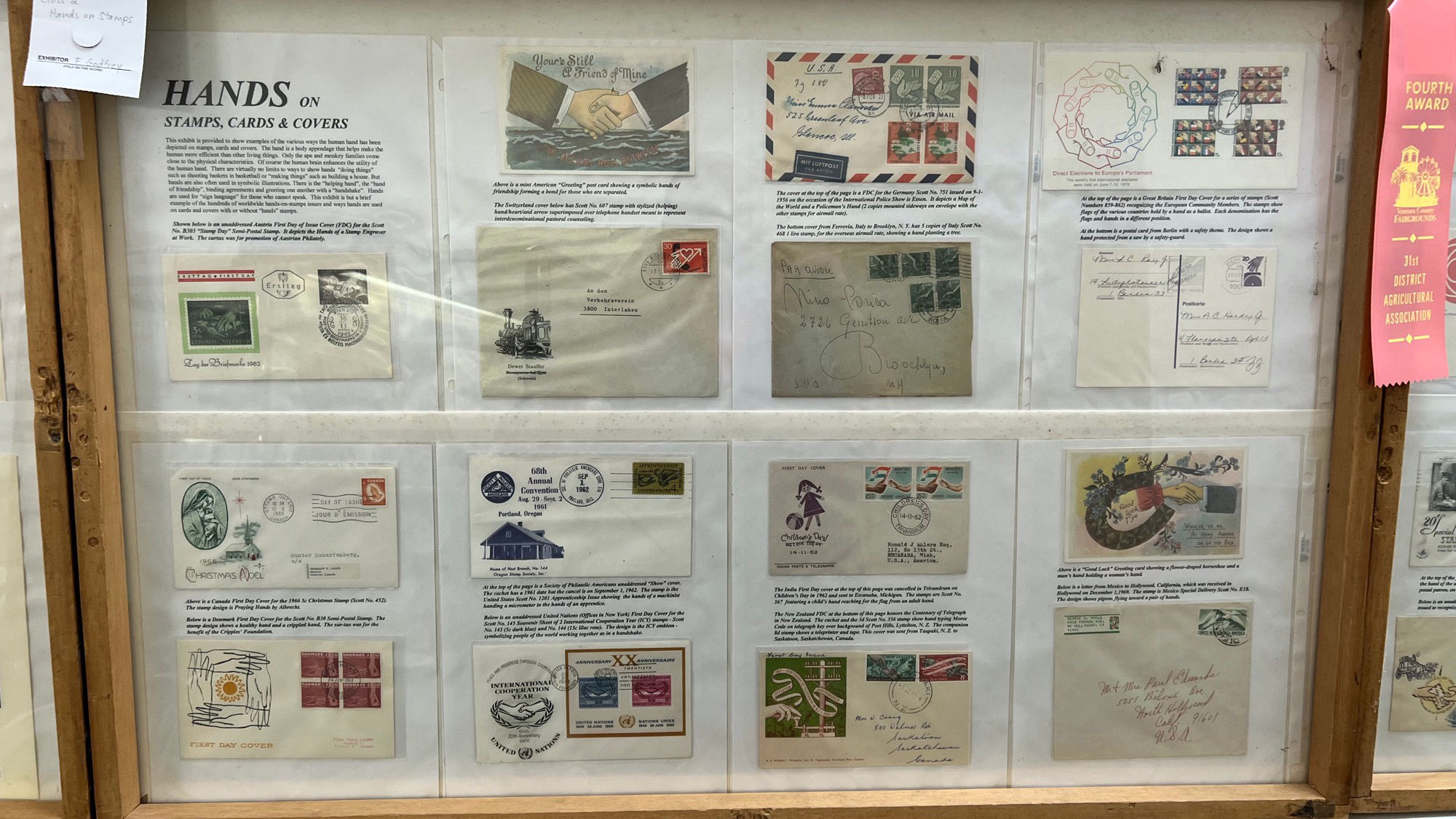
on Stamps, Cards, & Covers
This exhibit is provided to show examples of the various ways the human hand has been depicted on stamps, cards and covers. The hand is a body appendage that helps make the human more efficient than other living things. Only the ape and monkey families come close to the physical characteristics. Of course the haman brain enhances the utility of the juman hand. There are virtually no limit to ways to show hands "doing things" such as shooting baskets in basketball or "making things" such as building a house. But hands are also often used in symbolic illustrations. There is the "helping hand", the "hand of friendship", binding agreements and greeting one another with a "handshake". Hands are used for "sign language" for those who cannot speak.
This exhibit is but a brief example of the hundreds of worldwide hands-an-stamps issues and ways hands are used cards and covers with or without "hands" stamps.
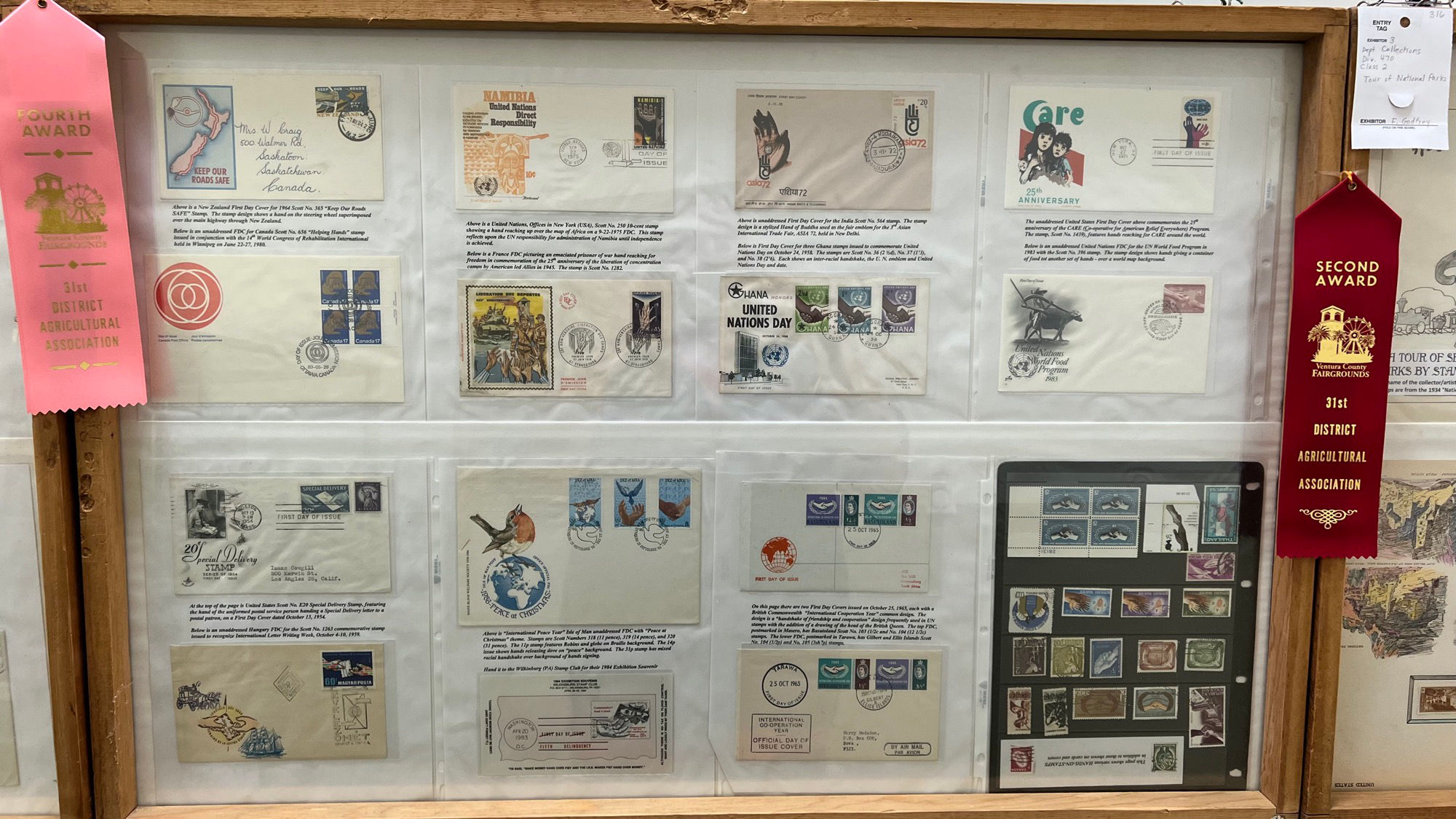
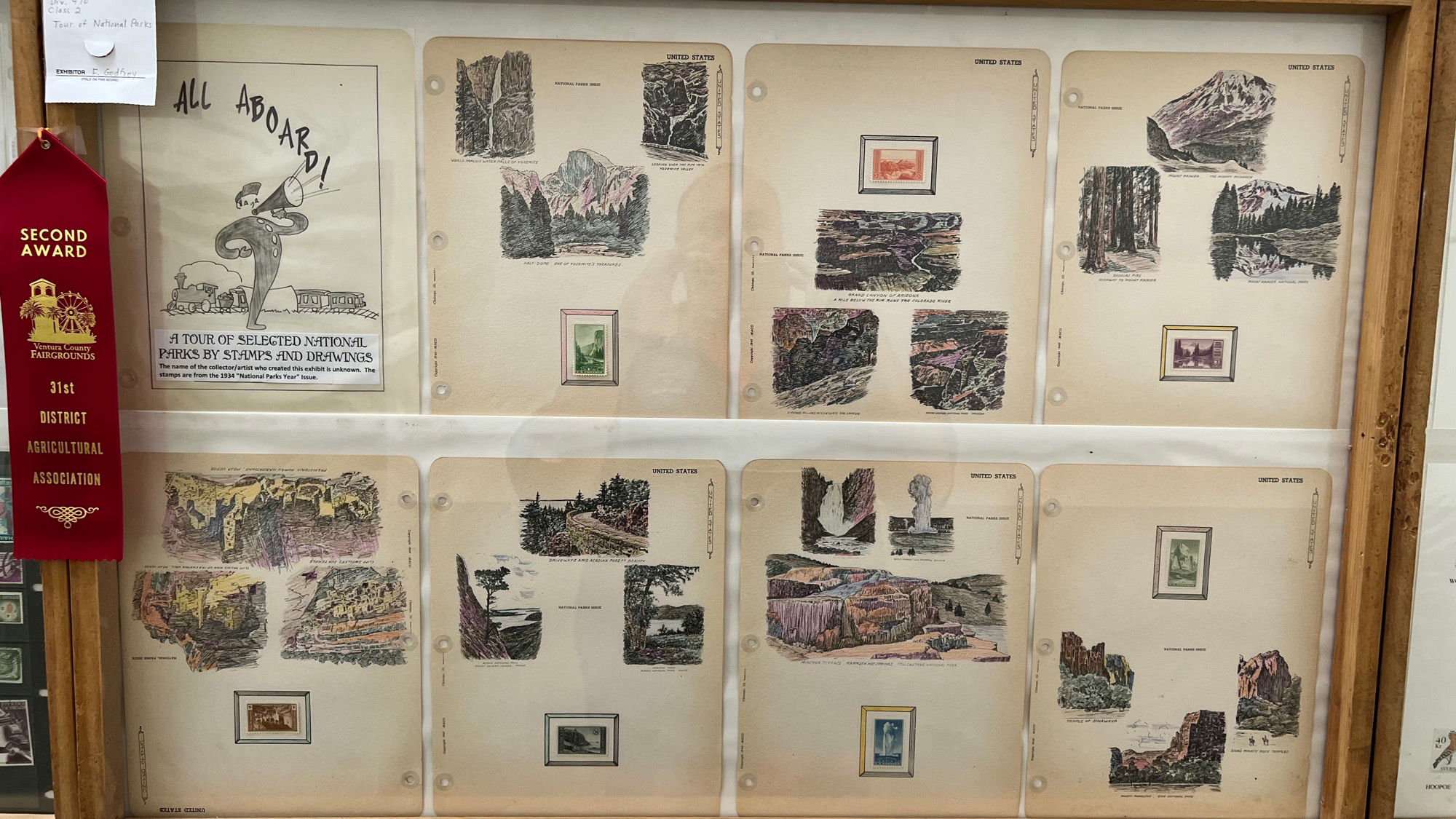
A tour of selected National Parks by stamps and drawings. The stamps are from the 1934 "National Parks Year" issue.
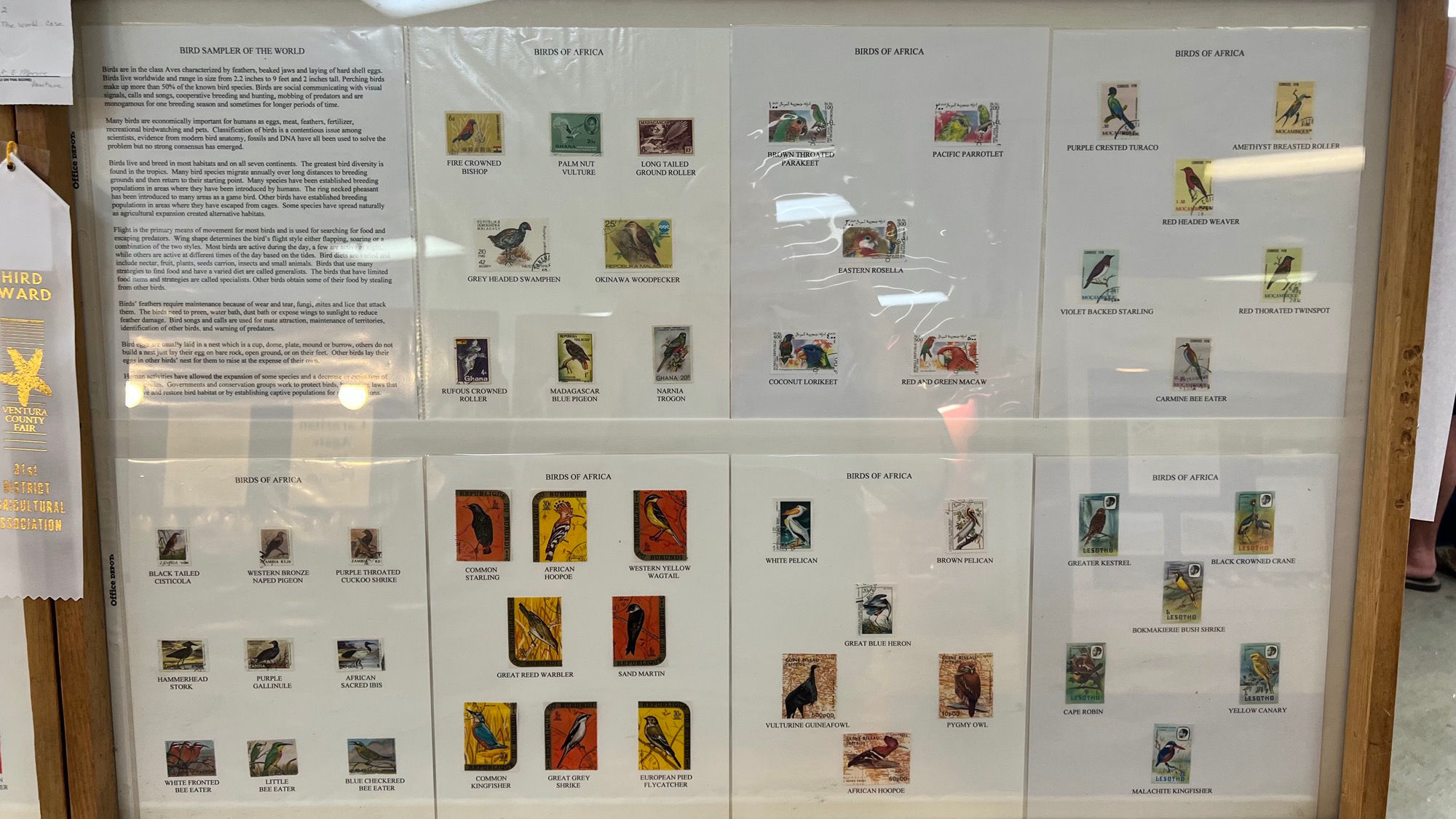
Birds are in the class Aves characterized by feathers, beaked jaws and laying of hard shell eggs. Birds live worldwide and range in size from 2.2 inches to 9 feet and 2 inches tall. Perching birds make up more than 50% of the known bird spocies. Birds are social communicating with visual signals, calls and songs, cooperative breeding and hunting, mobbing of predators and are monogamous for one breeding season and sometimes for longer periods of time.
Many birds are economically important for humans as eggs, meat, feathers, fertilizer, recreational birdwatching, and pets. Classification of birds is a contentious issue among scientists, evidence from modern bird anatomy, fossils and DNA have all been used to solve the problem but no strong consensus has emerged.
Birds live and breed in most habitats and on all seven continents. The greatest bird diversity is found in the tropics. Many bird species migrite annually over long distances to breeding grounds and then return to their starting point. Many species have been established breeding populations in areas where they have been introduced by humans. The ring necked pheasant has been introduced to many areas as a game bird. Other birds have established breeding populations in areas where they have escaped from cages. Some species have spread naturally as agricultural expansion created alternative habitats.
Flight is the primary means of movement for most birds and is used for searching for food and escaping predators. Wing shape determines the bird's flight style either flapping, soaring, or a combination of the two styles. Most birds are active during the day, a few are active at night while others are active at different times of the day based on the tides. Bird diets are varied and include nectar, fruit, plants, seeds carrion, insects, and small animals. Birds that use many strategies to find food and have a varied diet are called generalists. The birds that have limited food items and strategies are called specialists. Other birds obtain some of their food by stealing from other birds.
Birds* feathers require maintenance because of wear and tear, fungi, mites, and lice that attack them. The birds need to preen, water bath, dust bath, or expose wings to sunlight to reduce feather damage. Bird songs and calls are used for mate attraction, maintenance of territories, identification of other birds, and warning of predators.
Bird eggs are usually laid in a nest which is a cup, dome, plate, mound, or burrow. Others do not build a nest just fay their egg on bare rock, open ground, or on their feet. Other birds lay their eggs in other birds nest for them to raise at the expense of their own. Human activities have allowed the expansion of some species and decrease or extinction of other species. Governments and conservation groups work to protect birs. by creating laws that preserve and restore bird habitat or by establishing captive populations for..
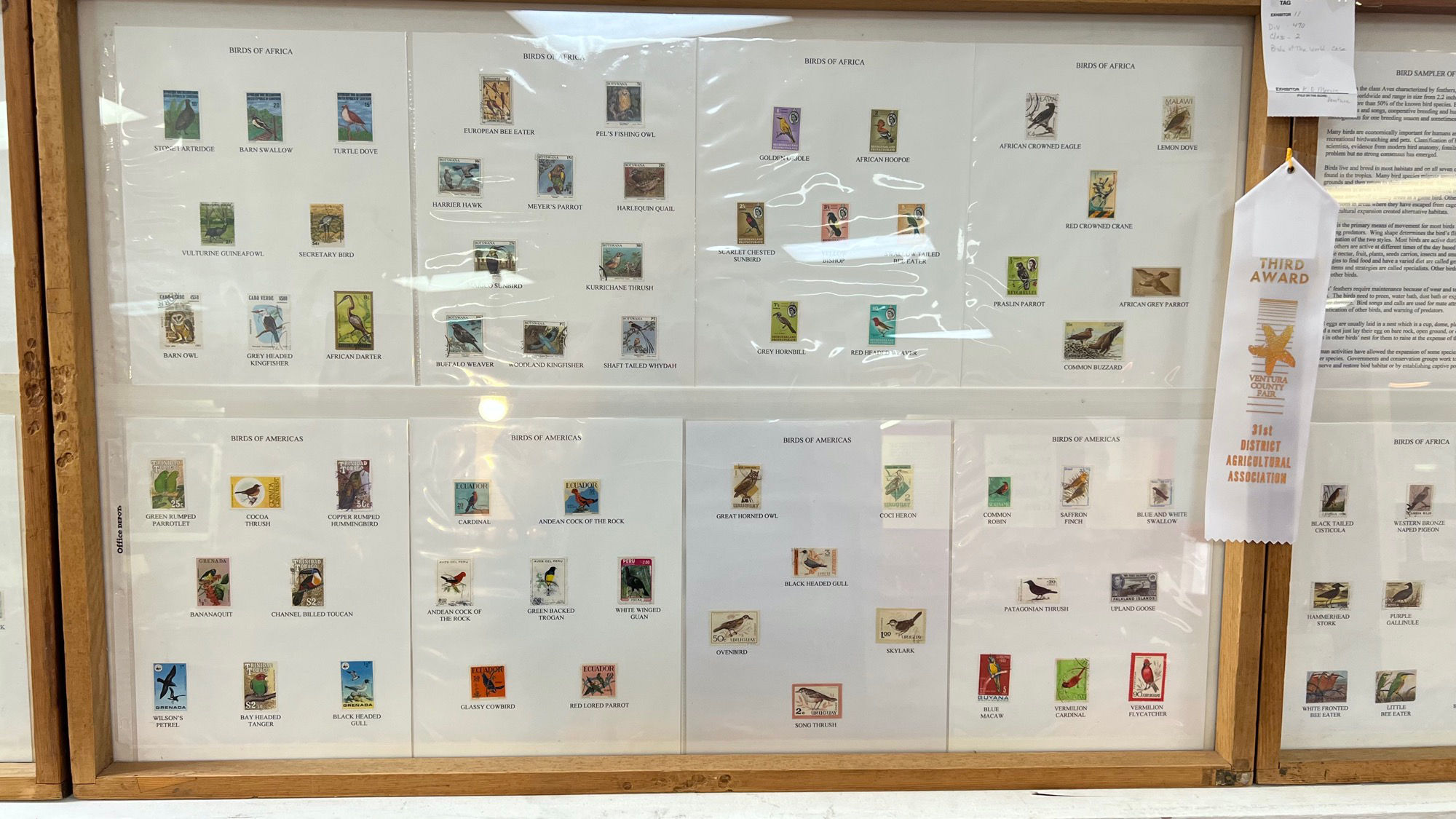
Birds of Americas
